Keynote Speakers
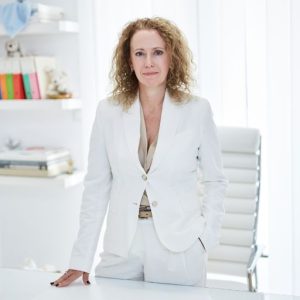 Irini Stamatoudi, LL.M., Ph.D.
Irini Stamatoudi, LL.M., Ph.D.
Lawyer at the Supreme Court, Greece
Professor in Intellectual Property Law and in Cultural Heritage Law, Law School, University of Nicosia, Cyprus
Short CV
Irini Stamatoudi is a Law Professor at the University of Nicosia (Cyprus) and a lawyer at the Supreme Court of Athens (Greece). She is specialised in Copyright and in Cultural Heritage Law. From 2007-2018 she was the General Director of the Hellenic Copyright Organisation (Greek Ministry of Culture and Sports). For many years she acted as a legal counselor to the Ministry of Culture on issues of illegal trafficking of antiquities where she handled the famous return cases of masterpieces from the J. P. Getty Museum (in Los Angeles) and from the Leon Levy & Shelby White collection (NY). She has taught extensively on various academic courses abroad and she has published thirteen books in copyright and in cultural heritage law in Greece and abroad and several articles in academic journals worldwide.
Title of Speech
Copyright issues pertaining to the digitization of cultural heritage materials
Summary
The presentation will discuss copyright issues pertaining to the digitization of cultural heritage materials. We shall first discuss what constitutes the subject matter of protection, which may vary from writings and works of art to works of architecture, photographs, audiovisual works, 3D models and so on. We will then examine the prerequisites for their protection. We shall then proceed with the content of protection and how this is relevant to digitisation, including relevant exceptions and limitations, and lastly, we shall focus on methods of enforcement of such protection and tips for the effective transfer of rights and the avoidance of infringing third party rights while digitising cultural heritage material.
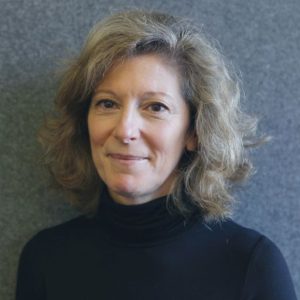 Susan de Menil
Susan de Menil
Co-Founder of Art & Antiquities Blockchain Consortium https://www.aabconsortium.org
Short CV
Susan de Menil is currently the founding co-president of the Art & Antiquities, Blockchain Consortium (AABC), a nonprofit 501(c)3 that uses blockchain-based infrastructure to guide the future of cultural heritage repatriation.
Since 1991,Susan has worked as the director of marketing, administration, and interior design for Francois de Menil, Architect, P.C. From 1999-2012, she served as the president and executive director of the Byzantine Fresco Foundation, the nonprofit organization that oversaw the acquisition, conservation, exhibition, stewardship, and return of frescoes that had been taken from the Church at Lysi in Cyprus. During that time, de Menil conducted in-depth ethnographic interviews with the many stakeholders in a complex international negotiation over the frescoes. Susan is the director of the forthcoming documentary on this project, 38 Pieces.
In her research and curatorial work, de Menill co-curated Angels & Franciscans: Innovative Architecture from Los Angeles and San Francisco, an exhibition which was awarded Best Architecture show by the International Association of Art Critics. The catalogue (with Bill Lacey) was published by Rizzoli. She is also co-editor of the book Sanctuary: The Spirit In/Of Architecture based on a symposium at the Menil Collection organized in conjunction with the exhibition Sanctuaries: The Last Works of John Hejduk.
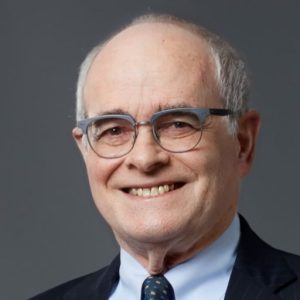 Thomas R. Kline
Thomas R. Kline
Of Counsel www.schlaw.com
Short CV
Tom, Of Counsel with Schindler Cohen & Hochman LLP, represents clients on art, cultural property and museum issues including providing advice, documenting transactions and handling claims and litigation. He is best known for such groundbreaking cases as Cyprus v. Goldberg (church mosaics stolen during Turkish occupation), Quedlinburg v. Meador (church treasures stolen by U.S. Army Lieutenant), Goodman v. Searle (claim of Nazi art theft) and Vineberg v. Bissonnette (forced sale).
For 20 years, Tom co-taught a seminar on Museums and Cultural Property as Professorial Lecturer in the Museum Studies Program, George Washington University and serves as President of the Lawyers’ Committee for Cultural Heritage Preservation.
For protecting German Cultural Heritage, Tom was awarded the Officer’s Cross of the Order of Merit of the Federal Republic of Germany (Das Verdienstkreuz des Verdienstordens) and has also received the Medal of Cyprus Technical University for protecting the cultural heritage of Cyprus.
Joint Keynote Speech with Susan de Menil
Title of Speech
Cultural Property Disputes: The Lysi Frescoes and The Stargazer
Summary
Looking at two case studies, The Lysi frescoes and the Stargazer (Idol) statuette, the presentation will explore the problems in protecting cultural property and recovering items believed to have been improperly taken.
Following rampant looting of churches in the occupied area of Cyprus in the mid to late 1970s, the Menil Foundation of Houston, Texas purchased 13th century frescoes taken from the famed chapel of St. Euphemianos in Lysi. The dome and apse frescoes had been cut into thirty-eight pieces which The Foundation purchased on behalf of the Church of Cyprus. The Foundation restored the frescoes and displayed them in a specially built chapel consecrated by the Archbishop of Cyprus in Houston from 1997 to 2012, when they were returned to the Church of Cyprus. The landmark agreement addressed the ideas of stewardship and ownership in a forward-thinking model.
In contrast, the Republic of Turkey to date has been unable to recover an ancient marble statuette, known as an Idol or Stargazer, that it believes was looted in Turkey in the 1960s. After trial, the US court validated Turkey’s 1906 Ottoman Decree declaring ownership of all antiquities found in the ground but also held that Turkey had failed to establish that the object was found after 1906 in modern-day Turkey. Turkey, as well, had fatally slept on its rights allowing decades to pass before bringing its claim. The Stargazer had been prominently exhibited and published for decades and had been well known to Turkish officials; during that time, key witnesses died, and documents were lost or destroyed. Turkey has appealed and the case is presently pending before the U.S. Court of Appeals for the Second Circuit. It is likely to be argued to the court in December 2022.
These two case studies demonstrate the numerous factual, legal and conservation issues involved in protecting and recovering cultural objects – in the one case well documented and taken from a monument and in the other, undocumented.
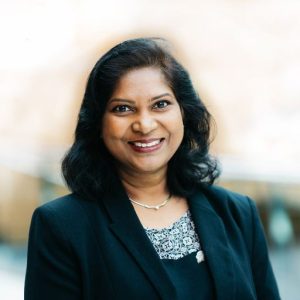 Catharine Dass
Catharine Dass
Architect, UK Parliament
Short CV
Catharine Dass is an architect in the United Kingdom (UK) Parliament. She joined the Parliament in 2019 and is one of the few experts in this field. She pioneered the introduction of heritage requirements for digital construction within the UK Parliament for conservation works, working closely with the in-house teams and consultants, National Building Standards (NBS) and the BIM4Heritage group. In the past, she worked in different countries, including Malaysia, Scotland and Dubai (UAE), before joining the Ministry of Justice (MoJ) in London in 2013. She was a vital team member responsible for using tech to design and create a digital representation of building components with the combined use of laser scanning. She graduated from the University of Malaya, Malaysia, Glasgow School of Art, Glasgow and qualified at London Metropolitan University, London. She combines her passion for architecture and heritage with the knowledge and experience gained in digital construction to transpire innovative solutions for heritage and conservation. Her innovative digital work has established Parliament as an internationally pioneering classifying requirement of conservation works through the introduction of setting prerequisites for conservation works for historic projects. Thanks to her innovative works, she has been shortlisted for several prestigious awards in 2022 and winner of the TechWomen100 award.
Title of Speech
Summary
The Palace of Westminster is a working building with a fascinating mixture of ancient and modern buildings and houses an iconic collection of furniture, archives and works of art. It attracts about 1 million visitors annually. Within UK Parliament, we embrace the use of innovative digital technologies for; conservation, stakeholder engagement, visitor experiences, asset management and problem reporting to name a few. This presentation will detail the challenges faced and our digital approach to identifying, recording, and classifying conservation works to restore, preserve and protect our UNESCO World Heritage Site for future generations.
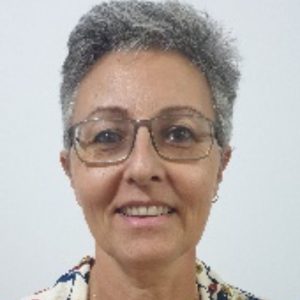 Mrs. Yasmine MAKAROUN, PhD
Mrs. Yasmine MAKAROUN, PhD
Architect, archaeologist, heritage consultant – Assistant Professor, Center of Conservation and Restoration, Lebanese University, Lebanon – President of ICOMOS Lebanon
Short CV
Graduated in architecture from the Institute of Fines Arts at the Lebanese University in Beirut, Yasmine Makaroun qualified in management of archaeological sites and obtain a PhD in archaeology from EPHE at Paris Sorbonne. She took part in archeological excavations and handled conservation projects for major world heritage sites in the Mena Region. Her professional practice as heritage expert covers both restoration of historical monuments, archaeological site management, site museums, and urban heritage. Her publications are focusing on ancient architectural technics and vernacular architecture conservation in Lebanon. Full time assistant-professor at the Faculty of Architecture at the Lebanese University, member of universities jury’s, invited lecturer, she took part in many conferences and seminars. Founder member of the Center of Conservation and Restoration, she handled the direction from 2015 to early 2022. Member of the board of Icomos Lebanon and acting as President since June 2021, she undertakes technical and evaluation missions on behalf of Unesco and capacity building training sessions for heritage experts in the Arab region.
Title of Speech
Lebanon and its cultural heritage in a state of crisis.
Summary
Lebanon’s heritage is a great combination of natural and cultural assets within an exceptional context. This presentation will expose the main components of Lebanese heritage and recent major conservation, restoration and preservation interventions involving the use of digital techniques. We will address the major challenges facing this heritage and its people in a context of unique crisis on a global scale and in particular, after the explosion of the port of Beirut in 2020, the initiatives put in place with the support of ICOMOS, to save its built heritage and cultural identity.
 Dimi Dimitrov
Dimi Dimitrov
Wikimedia Europe
Short CV
Dimi Dimitrov is EU Policy Director for Wikimedia in Brussels. His work includes explaining to lawmakers how self-organised online communities can moderate content on platforms, thus providing an alternative content moderation model.
He has been involved in the debates around the latest EU copyright directive and especially a provision on the digitisation of works with expired copyright.
Title of Speech
Digitising and sharing public domain works after the EU copyright directive
Summary
Article 14 of the latest EU copyright directive is a provision that ensures public domain works aren’t protected by copyright or related rights upon digitisation. This provision allows projects like Wikipedia and essentially everyone else to publish works from museum collections such as the Thyssen Bornemisza museum in Madrid. However, the provision is not without limits. The Italian Cultural Heritage Code doesn’t allow the commercial re-use of cultural heritage works in the collections of public institutions, unless royalties are paid. In my presentation I will demonstrate the limits of both provisions and give examples of what is currently legal and what not.
Gunnar Liestøl
Professor, dr. philos. Dept. of Media & Communication, Universsity of Oslo
Short CV
Liestøl has a magister artium degree in general and comparative literature, and a doctorate in media studies (on Hypermedia Design), both from the University of Oslo. His research has been in the field of digital media and rhetorics with a special focus on storytelling and narrative design. He has published and co-published numerous articles and books, among them Digital Media Revisited (MIT Press). He is currently conducting experimental research on theories and design methodologies for genre development in Indirect Augmented Reality, primarily focusing on cultural heritage, archaeology and reconstructions of historical events.
Title of Speech
Augmented Reality Storytelling in Cultural Heritage Communication
Summary
Location–based media in general and augmented reality in particular changes the way we tell stories and design narratives in cultural heritage communication. The combination of the real environment and original artefacts with digital reconstructions and simulations on location provides a potential for rich experiences. How do we go about when creating these narratives where we encounter new contexts for digital storytelling. The presentation will draw on recent experiments with augmented reality simulations developed and tested on a series of Cultural Heritage sites. Topics include challenges with indoor/outdoor positioning, gamification, narrative flow vs. access to databases, and more.



